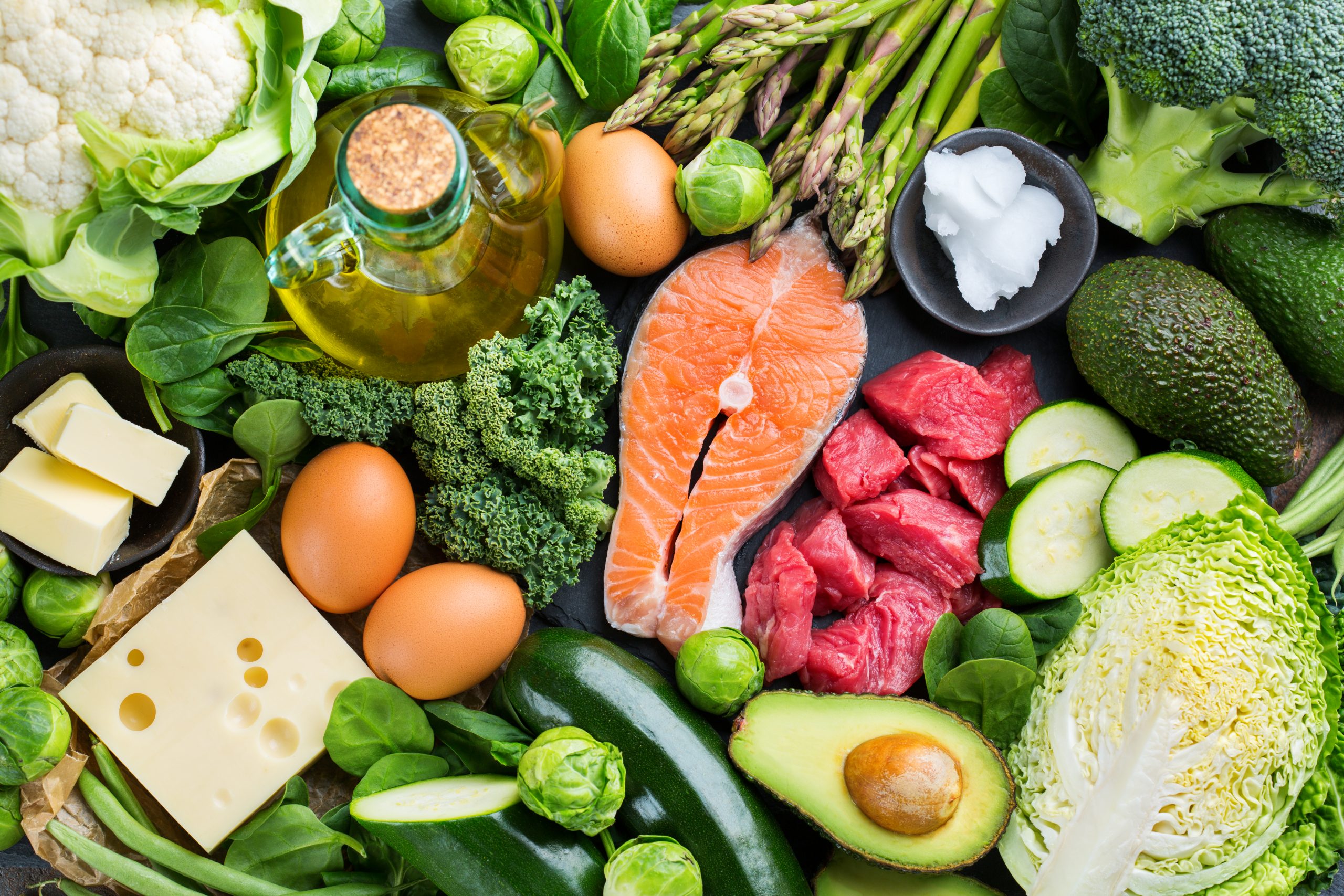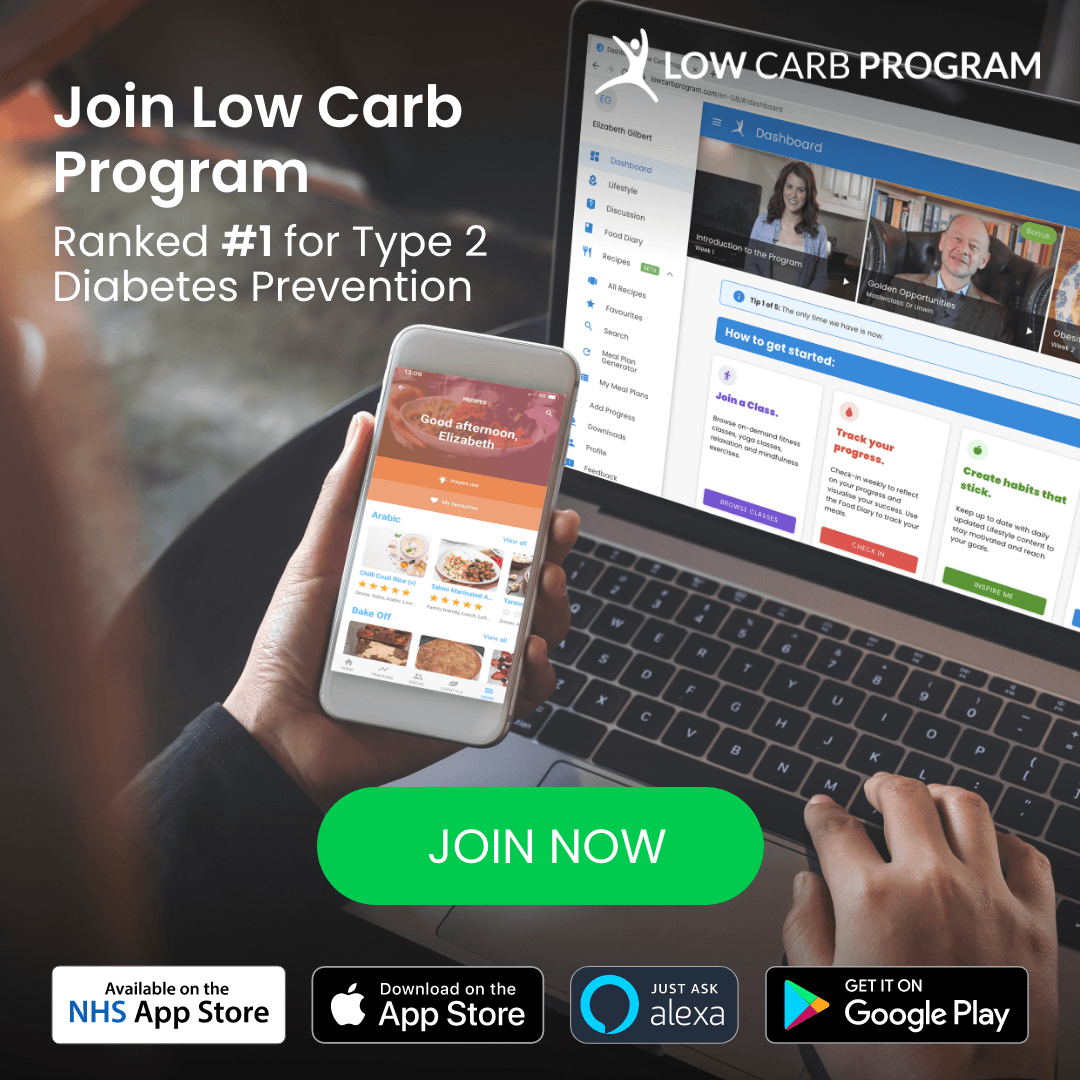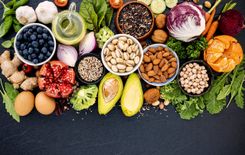How does low carb compare to other diets?

Low carb has become increasingly popular over the past few years, gaining recognition for helping people put their type 2 diabetes into remission, as well as supporting sustainable weight loss. But how does it compare to other popular ‘diets’? Let’s first take a look at low carb.
Low Carb
The low carb approach in particular has been linked to improved blood glucose control and sustainable weight loss [1]. Here on the Low Carb Program, we define low carb as consuming less than 130g of carbs per day. The focus is on high quality protein and fat sources, while carbohydrates are limited [2]. We use a real food approach and encourage the inclusion of vegetables, nuts and other unprocessed foods that are generally lower in carbohydrates. It can be easily adapted to different dietary preferences and offers flexibility with meal timings.

Western diet
This is also often referred to as the ‘Standard American Diet’ (SAD) and usually consists of around 50% carbohydrates, 35% protein and 15% fat. It includes high carb foods such as pasta, potatoes and rice. The consumption of processed foods tends to be high, leading to a greater intake of sugar, additives and saturated fats, which together can often lead to poor metabolic health [3]. The Western diet is often high in trans fats, which have been linked to cardiovascular disease and coronary heart disease [4]. Because of this, public health strategies in recent years have focused on limiting fat intake, and promoting a a high-carb, low-fat diet. The advice given by the NHS ‘Eatwell guide’ is to consume 5 portions of fruit and vegetables, base meals around carbohydrates such as rice, bread or other starchy carbohydrates, include some dairy (or alternatives) and consume lean meats and legumes for protein. High-sugar foods, snacks and oils should only be consumed in moderation [5].
Paleo
With paleo the focus is on consuming foods that our hunter-gatherer ancestors had access to such as meat, nuts, seeds, fish and berries. Anything processed or refined such as grains are excluded, which actually makes it a ‘low carb diet’ due to the focus on healthy fats and animal protein. Paleo steers away completely from foods that are not available to consume directly from nature, such as cheese, yogurt and other healthy foods, such as legumes and tofu, making it a lot more restrictive, and for some difficult to follow.
Mediterranean
This diet is a staple in Mediterranean countries such as Greece, Italy and Spain, and consists of plenty of fish, olive oil, vegetables, nuts and seeds. This leads to high intakes of Omega-3 fats, which are understood to have a positive effect on heart health [6]. Red meat is eaten in moderation and food tends to be less processed, however the Mediterranean diet does still include high carb foods such as bread and pasta.

Keto
A ketogenic diet focuses on limiting carbohydrates as much as possible, to allow the body to enter a state of ketosis, where it burns fat as the primary source of fuel rather than carbohydrates. Here carbohydrates are restricted to about 20-50g per day to allow the body to enter ketosis (this will vary from person to person). This leads to a high consumption of fat and protein, with only small amounts of carbohydrates being ingested through foods such as nuts, seeds and green vegetables.
Atkins
The Atkins diet, which is named after its founder Dr Robert Atkins, also focuses on restricting carbohydrates, however unlike low carb this is done in 4 phases. In phase 1 carbohydrates are restricted to 20g per day to allow the body to enter a state of ketosis. In phase 2 nuts, seeds and low carb vegetables are introduced again. In phase 3 and 4 the diet is then more personalised, and more carbohydrates can be introduced again (once the desired goal weight has been achieved) to aid with maintenance.

Vegan/plant-based
Veganism and the plant-based diet are both founded in ethics often related to animal welfare and environmental issues. It excludes all forms of animal products such as meat, fish, dairy and even products such as honey. Instead, the main sources of protein are from soya, legumes and beans as well as nuts and seeds. These diets are very high in fibre and carbohydrates but can often be low in protein. They can also be high in processed food such as meat replacements and other ‘mock’ foods, which mimic animal products. Fat consumption is also often lower due to the exclusion of animal fats found in meat. A common concern with a vegan diet is the risk of micronutrient deficiency, particularly vitamin B12, which is predominantly found in animal products, such as milk and eggs [7]. To ensure adequate intake of all essential vitamins and minerals, good planning is important and supplementation is often required.
5:2
This diet is, also known as the fast diet, is a type of intermittent fasting diet. Five days of the week you can eat ‘normally’, while on the other two you are restricted to 500-600 calories per day. There are no restrictions about what foods to eat, only when to eat. There is still only very limited research available on the benefit of this diet, but it again focuses on weight loss. It can be easier to follow than some other diets, as you only need to track what you are eating two days a week, rather than every day.
Low calorie
The low calorie diet focuses on a specific target of calories, which should not be exceeded each day, rather than focusing on specific foods or macronutrients.
The NHS defines a low calorie (kcal ) diet as [8]:
- Between 1,000 and 1,500 calories per day for women
- Between 1,500 and 2,000 calories per day for men
The focus of a low calorie diet is mainly on weight loss, while no food is specifically off limits. Certain types of low carb and low fat diets can qualify as a low calorie diet. The main concern with this diet is ensuring a balanced intake of macro and micronutrients due to the low energy availability. The thought behind the diet is to create a calorie deficit which will help the body lose weight. Another approach is a very low calorie diet which limits calorie intake to as little as 800 calories per day and is often consumed through shakes and soups.[9].

Verdict
Choosing a diet is personal and should align with your goals, preferences and most importantly fit into your lifestyle. The key thing that a lot of these diets have in common is a focus on high quality fat and protein sources, eating a variety of vegetables and fibrous foods, and reducing consumption of ultra-processed sugary foods – all of which are a key part of the approach here on the Low Carb Program.
Want to give low carb a try? Sign up today!
Click here to find out what our members have to say about the Low Carb Program.
References
[1] Saslow, L., Summers, C., Aikens, J., and Unwin, D., 2018. Outcomes of a Digitally Delivered Low-Carbohydrate Type 2 Diabetes Self-Management Program: 1-Year Results of a Single-Arm Longitudinal Study. JMIR Diabetes, 3 (3).
[2] Last, A. and Wilson, S., 2006. Low-Carbohydrate Diets. American Family Physician, 73 (11), 1942–1948.
[3] Cordain, L., Eaton, S., Sebastian, A., Mann, N., Lindeberg, S., Watkins, B., O’Keefe, J., and Brand-Miller, J., 2005. Origins and evolution of the Western diet: health implications for the 21st century. The American Journal of Clinical Nutrition, 81 (2), 341–354.
[4] Souza, R. J. D., Mente, A., Maroleanu, A., Cozma, A. I., Ha, V., Kishibe, T., Uleryk, E., Budylowski, P., Schünemann, H., Beyene, J., and Anand, S. S., 2015. Intake of saturated and trans unsaturated fatty acids and risk of all cause mortality, cardiovascular disease, and type 2 diabetes: systematic review and meta-analysis of observational studies. Bmj.
[5] NHS, 2021. Eatwell Guide [online]. NHS Choices. Available from: https://www.nhs.uk/live-well/eat-well/the-eatwell-guide/ [Accessed 26 Jan 2021].
[6] Heidemann, C., Schulze, M., Franco, O., van Dam, R., Mantzoros, C., and Hu, F., 2008. Dietary Patterns and Risk of Mortality from Cardiovascular Disease, Cancer, and All-Causes in a Prospective Cohort of Women. Circulation, 118 (3), 230–237.
[7] Pawlak, R., Lester, S. E., and Babatunde, T., 2014. The prevalence of cobalamin deficiency among vegetarians assessed by serum vitamin B12: a review of literature. European Journal of Clinical Nutrition, 68 (5), 541–548.
[8] NHS, 2021. NHS Choices. Available from: https://www.nhs.uk/live-well/healthy-weight/very-low-calorie-diets/ [Accessed 22 Jan 2021].
[9] NHS, 2021. NHS Choices. Available from: https://www.nhs.uk/live-well/healthy-weight/very-low-calorie-diets/[Accessed 26 Jan 2021].








